[ENG-SPN] Cistercian architecture in New Castile / Arquitectura cisterciense en Castilla la Nueva
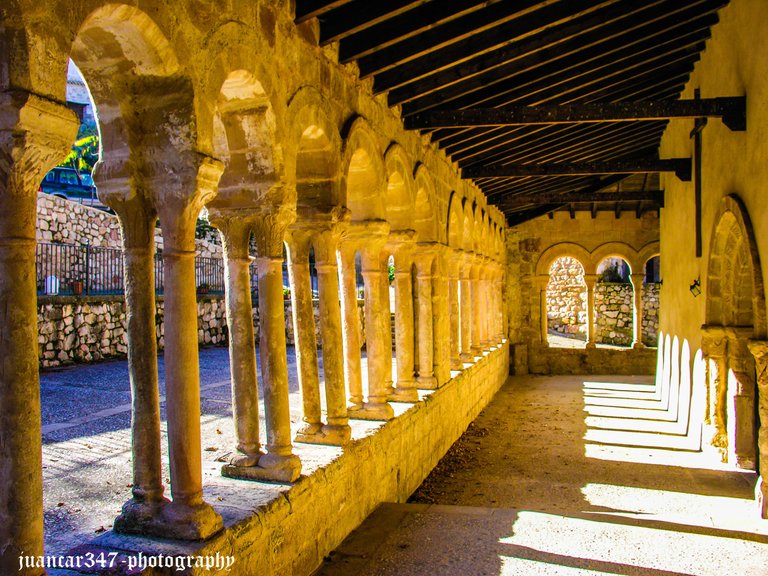
Austere, although in no way devoid of beauty and elegance, as it used to be a constant in the superb architecture of those white monks, the Cistercians, who appeased, metaphorically speaking, the unredeemed Minotaur of their inner labyrinths, practicing, with stubborn perseverance, the mantric axiom of 'ora et labora', that is, of 'pray and work', also New Castile - so called, because its territory was progressively reconquered and added to the recovery of a national territory that had been violently conquered by the Muslims in the 7th century, with the debacle of the last Visigoth king, Don Rodrigo, in the famous battle of the Guadalete River - has a rich and unparalleled heritage, both artistic, historical and, above all, cultural, which is well worth visiting. know and by default, be respected by everyone in general and in particular, by lovers of an architecture, the Romanesque, that every day attracts new additions to the multitudinous ranks of followers, to the point, that it could be said, that For a few years now, a media phenomenon is developing in Spain, which, in some way, also contributes to fostering passion and interest in a heritage that has been excessively battered in the past: cultural tourism.
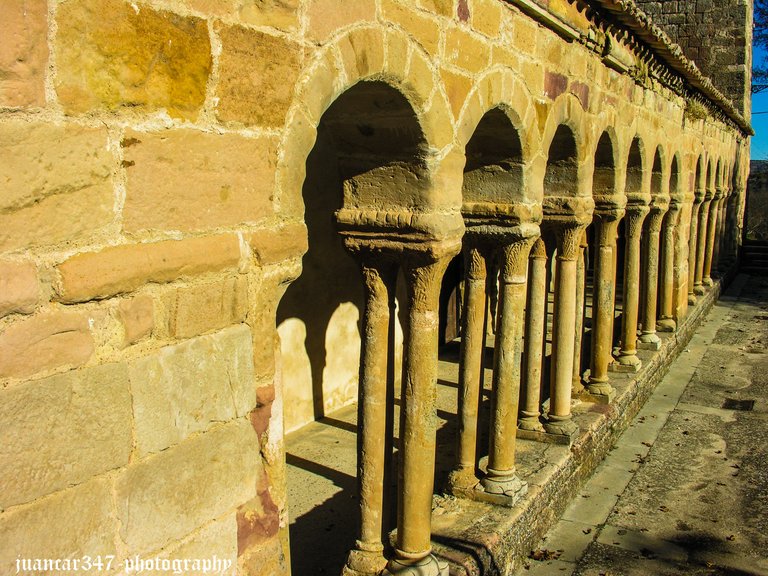
Guadalajara, an admirable community, located in the geographical center of a Plateau, under whose borders it strengthens border ties with Madrid, with Cuenca, with Toledo, with Soria, with Segovia and even, beyond the ravines of the Virgen de la Hoz, with that capital of the Mudejar Romanesque, which is the land of Teruel, it was also a witness of exception that was nourished, in those distant medieval times, not only by the itinerant passage of some brotherhoods of stonemasons who were leaving behind a school of architecture and sensitivity, always lagging behind the dust raised by the horses of Christian armies in full expansion, but, in addition, it also benefited from the establishment of a religious order, the Cistercians, whose skill and ability in the noble art of sacred architecture, left notable buildings, such as this immeasurable porticoed church dedicated to the figure of the Savior, located in the small, but beautiful municipality of Carabias.
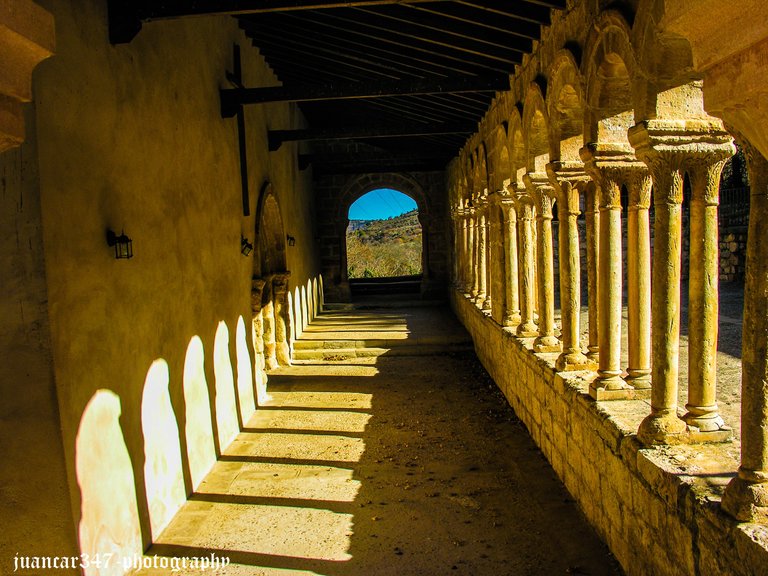
Austera, aunque en modo alguno exenta de belleza y elegancia, como solía ser una constante en la soberbia arquitectura de aquellos monjes blancos, los cistercienses, que aplacaban, metafóricamente hablando, al irredento Minotauro de sus laberintos interiores, practicando, con obstinada perseverancia, el mántrico axioma del ‘ora et labora’, es decir, del ‘reza y trabaja’, también Castilla la Nueva -llamada así, porque su territorio fue siendo progresivamente reconquistado y añadido a la recuperación de un territorio nacional que había sido violentamente conquistado por los musulmanes en el siglo VII, con la debacle del último rey visigodo, Don Rodrigo, en la famosa batalla del río Guadalete- posee un rico e inigualable patrimonio, tanto artístico, como histórico y sobre todo, cultural, que bien merece la pena darse a conocer y por defecto, ser respetado por todo el mundo en general y en particular, por los amantes de una arquitectura, la Románica, que cada día atrae nuevas incorporaciones a las multitudinarias filas de seguidores, hasta el punto, de que podría decirse, que, de unos años a esta parte, en España se está desarrollando un fenómeno mediático, que, además, de alguna manera, contribuye, también, a fomentar la pasión y el interés por un patrimonio, excesivamente vapuleado en el pasado: el turismo cultural.
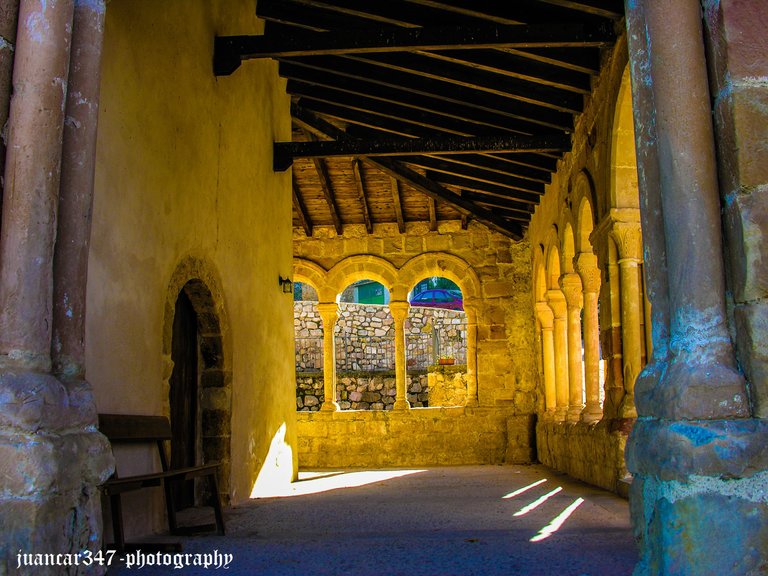
Guadalajara, una comunidad admirable, situada en el centro geográfico de una Meseta, bajo cuyas lindes estrecha lazos fronterizos con Madrid, con Cuenca, con Toledo, con Soria, con Segovia e incluso, más allá de los barrancos de la Virgen de la Hoz, con esa capitalidad del románico mudéjar, que es la tierra turolense, también fue testigo de excepción que se nutrió, en aquellos lejanos tiempos medievales, no sólo del paso itinerante de unas cofradías de canteros que iban dejando detrás de sí escuela de arquitectura y sensibilidad, siempre a la zaga del polvo levantado por los caballos de unos ejércitos cristianos en plena expansión, sino que, además, se benefició igualmente del asentamiento de una orden religiosa, el Císter, cuya destreza y habilidad en el noble arte de la arquitectura sagrada, dejó notables edificios, como ésta inconmensurable iglesia porticada dedicada a la figura del Salvador, sita en el pequeño, aunque hermoso municipio de Carabias.
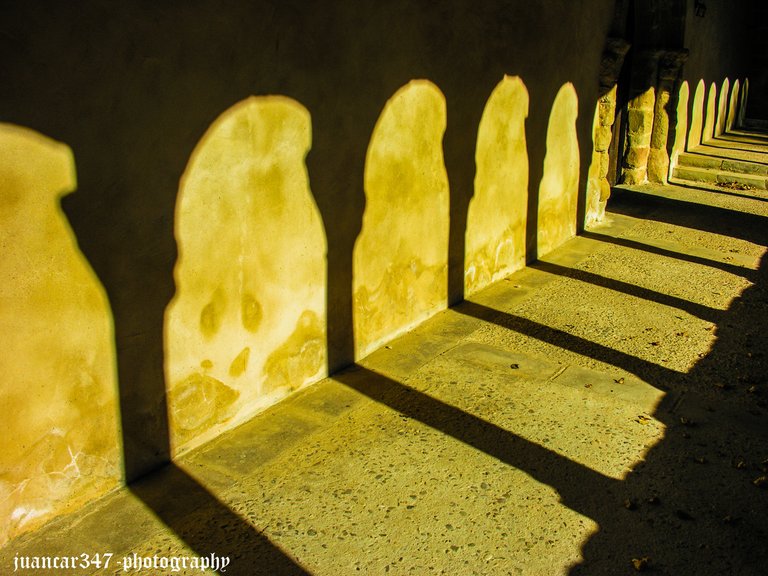
NOTICE: Both the text and the accompanying photographs are my exclusive intellectual property and are therefore subject to my Copyright.
AVISO: Tanto el texto, como las fotografías que lo acompañan, son de mi exclusiva propiedad intelectual y por lo tanto, están sujetos a mis Derechos de Autor.

So much architectural work been done here actually
That's true.
Austere is looking very beautiful
It is indeed a lovely place
Nice one!
Austerity and simplicity are also two qualities that emanate from beauty.